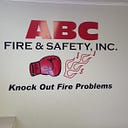The Evolution of Fire Sprinkler Technology: From the Past to the Present
Introduction:
Fire sprinkler systems have come a long way since their inception, evolving from rudimentary designs to advanced, intelligent systems. The journey of fire sprinkler technology is a fascinating exploration of innovation and commitment to enhancing fire safety. In this article, we’ll trace the evolution of fire sprinkler technology, examining the key milestones that have shaped these systems into the highly effective and reliable safety measures we know today.
Early Days of Fire Sprinklers:
The concept of automatic fire sprinklers dates back to the 19th century. The first recorded design was created by Sir William Congreve in the early 1800s. These early systems were often manually operated and lacked the sophistication of modern sprinklers. They were primarily used to protect high-value properties, such as factories and warehouses.
- Perforated Pipes and Fusible Joints: The earliest sprinkler systems utilized perforated pipes with fusible joints. These joints would melt at a specific temperature, causing the water to be released onto the fire. While a step forward in fire protection, these systems were far from the automatic, heat-sensitive sprinklers we are familiar with today.
- Parmelee’s Automatic Sprinkler: In the late 19th century, Henry S. Parmelee improved upon existing designs by creating an automatic sprinkler that was activated by the heat of a fire. This innovation marked a significant shift toward more reliable and efficient fire protection.
The 20th Century Advancements:
As the 20th century dawned, advancements in technology and materials allowed for more sophisticated fire sprinkler designs. The development of new alloys and manufacturing techniques paved the way for systems that were not only more effective but also easier to install and maintain.
- Glass Bulb Sprinklers: The introduction of glass bulb sprinklers in the early 20th century was a breakthrough. These sprinklers featured a glass bulb filled with a heat-sensitive liquid. When the ambient temperature reached a certain level, the bulb shattered, activating the sprinkler. This design improved accuracy and reduced the risk of false activations.
- Pendent and Upright Sprinklers: Sprinkler heads evolved with the introduction of pendent and upright designs. Pendent sprinklers hang down from the ceiling, while upright sprinklers stand vertically. This innovation allowed for more flexibility in system installation to suit various building configurations.
- Fast Response Sprinklers: In the latter half of the 20th century, fast response sprinklers were introduced. These sprinklers had a quicker response time, releasing water faster than traditional designs. Fast response sprinklers proved especially effective in high-heat environments.
Technological Innovations in the 21st Century:
The 21st century brought about a new era of technological innovation, with fire sprinkler systems incorporating advanced features and smart capabilities. These developments have further enhanced the reliability, efficiency, and adaptability of fire sprinklers.
- Smart Sprinkler Systems: The integration of smart technology into fire sprinkler systems has been a game-changer. Smart sprinkler systems can be connected to building automation systems, allowing for centralized control and real-time monitoring. These systems can provide instant alerts, remote diagnostics, and even predictive maintenance.
- IoT-Enabled Sensors: Internet of Things (IoT) technology has found its way into fire sprinkler systems, enabling the use of sensors for continuous monitoring. These sensors can detect changes in temperature, smoke, and air quality, providing a more comprehensive approach to fire safety.
- Enhanced Water Delivery Systems: Modern fire sprinkler systems incorporate enhanced water delivery systems that optimize water usage while maximizing effectiveness. These systems can adapt to different fire scenarios, delivering the right amount of water precisely where it is needed.
- Improved Corrosion Resistance: Advances in materials science have led to the development of sprinkler components with improved corrosion resistance. This ensures the longevity of the system and reduces the need for frequent replacements or maintenance.
- Integration with Building Management Systems: Fire sprinkler systems now seamlessly integrate with building management systems, offering a holistic approach to safety. These integrated systems can coordinate with other safety measures, such as smoke detectors and alarms, providing a more synchronized response to emergencies.
Conclusion:
The evolution of fire sprinkler technology reflects a commitment to enhancing fire safety through continuous innovation. From rudimentary designs of the past to the smart and interconnected systems of today, fire sprinklers have undergone a remarkable transformation. These systems not only protect lives and property but also contribute to the overall resilience of buildings and communities.
As we look toward the future, the evolution of fire sprinkler technology is likely to continue, driven by advancements in materials, artificial intelligence, and data analytics. The goal remains constant: to create fire sprinkler system that are not only effective but also adaptable to the ever-changing dynamics of our modern world
